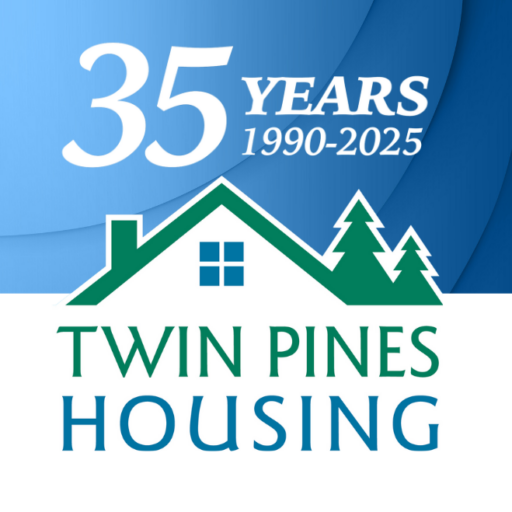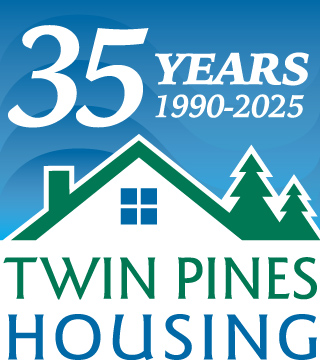WHITE RIVER JUNCTION — Twin Pines Housing and the Upper Valley Haven are proposing to build affordable housing and more shelter beds on church property next to the existing Haven site on Route 5.
The proposal could add 18 one-bedroom apartments for low-income tenants and 20 emergency shelter beds in a bid to address the Upper Valley’s housing crisis and concerns about safe lodging for the homeless.
The two nonprofits this week said they have an option to purchase two parcels of a property owned by St. Paul’s Episcopal Church on Route 5, aka Hartford Avenue, in White River Junction where they want to extend housing, shelter and social support services to economically distressed families and individuals.
If successful obtaining the necessary financing and zoning approvals — St. Paul’s will first seek to divide its nearly 2-acre property into three parcels — the parties hope to begin construction in 2023, organizers said this week.
“We are a small, aging congregation and we have to do something to ensure our viability and there is this huge housing crisis in Hartford that is only getting worse,” said Leslie Black, chair of the planning committee at St. Paul’s. “We’ve always been interested in the issue, and this is a way to use our property to support that need,” she said, adding that proceeds from the parcel sales will help to pay for the church’s long-overdue upgrade in energy efficiency.
Under the proposed plan, which will be presented informally to the Hartford Planning Commission on Monday night, Twin Pines Housing would purchase a parcel on the east side of the church to build a three-floor structure containing 18 low-income, one-bedroom rental units, and the Haven would purchase a parcel at the south end of the church property adjacent to its facility which would contain 20 shelter beds and program space and staff offices.
St. Paul’s, which helped establish the Haven 40 years ago, would retain the land around its sanctuary and parish hall.
By co-locating permanent low-income rental housing, acute shelter capacity and a menu of wrap-around support services, the church and nonprofits would effectively create a micro campus and destination for struggling families and individuals who are unable to afford a roof over their head or are homeless in the Upper Valley, according to organization officials.
The added 8,000 square feet provided by its new dual-purpose building could also allow the Haven to host space for other Upper Valley social service organizations such as domestic abuse counselor WISE, free medical and dental care provider Good Neighbor Health Clinics and substance abuse treatment center Headrest to meet with their clients, said Michael Redmond, the Haven’s executive director.
“We want this to be a place for resources, a center where we can invite other organizations who are working with the same folks that we are,” Redmond said.
The current Haven facility, in addition to operating a food shelf, provides temporary shelter facilities to eight families in the Byrne House Family Shelter, and, in a separate building known as Hixon House Adult Shelter, temporary residences for up to 20 individuals in 10 double-occupancy rooms.
Before the pandemic, the Haven also ran a “low-barrier” shelter during the winter in which it would set out 15 cots in the dining area for men and women who needed emergency overnight shelter. But COVID-19 concerns ended that program in March 2020 and the proposed new building would revive the shelter with room for 20 people on the second floor, Redmond explained.
“Now we want to build something that is better, better for safety, a little more space for privacy, partitions around the cots, electrical sockets to charge phones, changing rooms, lockers, more showers, a laundry,” Redmond elaborated.
The first floor would be dedicated to meeting rooms, educational and program spaces, staff and caseworker offices. and computer workstations that shelter residents could use to find permanent housing and work.
Redmond estimated the new building would cost about $3 million “as a rule of thumb,” which the Haven would finance through public and private grants and fundraising.
The proposed Twin Pines building would be only a few feet away, which would make it easy for a resident to tap resources and programs provided at the Haven, said Beth Long, CFO of the housing nonprofit.
Long said the proposal to add an affordable housing building at the St. Paul’s location for easy access to the Haven’s resources is modeled after Twin Pines Housing’s Parkhurst Community Housing low-income apartment building — also 18 units — in downtown Lebanon. The Haven has a caseworker assigned to residents of that building, who help with everything from vouchers, transportation, treatment and medical appointments if necessary.
“It’s been very successful here and we’re now looking to provide the same opportunity to Vermont residents,” Long said.
Long, who didn’t have a precise estimate for how much the 18-unit building would cost but nonetheless expected it would be “several millions,” said Twin Pines would be applying for state grants funded by federal money in addition to the award of tax credits that the nonprofit has tapped on prior projects.
On Monday, the parties will go before the Hartford Planning Commission to preview the plan with a formal application to be made early in the new year. The Monday meeting is an informal session for both the applicant and the city to ask each other questions to sketch out the scope of the project and review the permitting process ahead, said Lori Hirshfield, director of planning and development for Hartford.
The Haven’s Redmond said the Planning Commission several years ago approved the Haven’s status as a “planned development,” which it sought when the Route 5 site brought multiple functions — shelter, food pantry, programs — to one location.
A planned development means the applicant does not have to seek a variance as long as the purpose comports with the underlying zoning, requiring only an amendment to the approved plan.
The biggest obstacle may be resistance from abutters of St. Paul’s property not relishing the prospect of living adjacent to an expanded shelter for homeless people, an issue that has dogged other attempts to solve homelessness in Hartford.
St. Paul’s Black said members of the church have recently been knocking on neighbors’ doors to inform them of the plan and to gauge their reaction.
“We get varied responses. We get ‘it’s wonderful you are doing this because housing is such a problem’ and then there are people who are not so enthusiastic,” Black said.
Contact John Lippman at jlippman@vnews.com.



